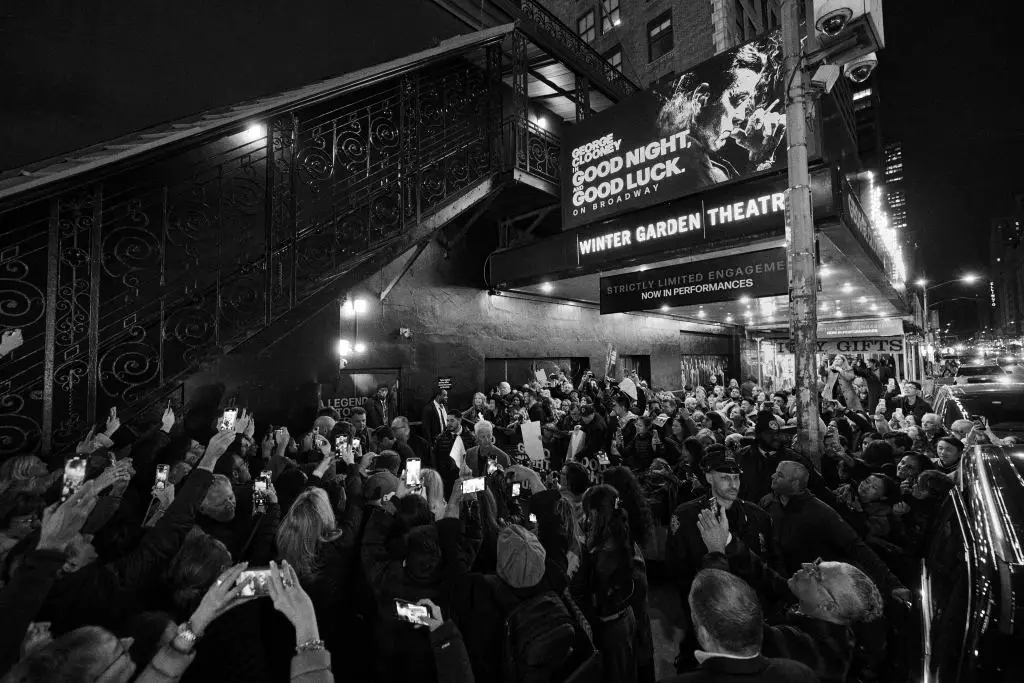Broadway is experiencing a renaissance, and it’s nothing short of mesmerizing. The recent figures reveal a thrilling flurry of activity, with more shows breaking into the exclusive $2 million club than ever before. It’s not merely a financial resurgence; it reflects a cultural moment fueled by star power and audience anticipation, manifesting in a wave of ticket sales and overwhelming enthusiasm. The price of admission has also soared, but audiences seem unfazed by the numbers, eagerly flocking to the theaters despite the financial demands. This spike in ticket prices demands scrutiny—do we sit back and let this trend continue unchecked, or is it time for a more focused dialogue about accessibility to the arts?
The Power of Star Casts
The excitement around shows such as “Good Night, And Good Luck,” featuring the talented George Clooney, indicates that star casts draw in unprecedented numbers. Clooney’s involvement is not just a casting choice; it’s a marketing masterpiece. When the overall average ticket price hovers around $135, a ticket for “Good Night, And Good Luck” sells for a staggering $303.75, and that’s before we even consider premium pricing shooting to stratospheric heights. The question arises: does celebrity overshadow the quality of the content, or are we genuinely enjoying higher caliber performances? Ultimately, reliance on celebrity star power can generate a vicious cycle where fewer unknown artists break through while the established stars dominate the box office.
The Dangers of Premium Pricing
Truly, the premium ticketing has spiraled out of control. Crowning productions like “Othello” charging $897 for a seat is not only eye-popping but also sets a concerning precedent. While premium pricing certainly capitalizes on demand, it raises issues of inequity. The art of theater, designed to engage diverse audiences, risks becoming an elitist affair where only those with deep pockets can afford the luxury of experiencing story-telling’s finest. Imagine a Broadway where price tags alone can determine who gets to enjoy the creative expressions of our time; is that a fair or equitable approach to art?
A Promising Yet Problematic Future
Underpinning the financial success of Broadway is not just the draw of star power and premium pricing but also the potential for cultural representation. Plays like “Buena Vista Social Club” and “Purpose” showcase diverse narratives. These productions challenge the status quo while achieving substantial box-office figures. However, as theatrical offerings expand, they also run the risk of homogenizing experiences where fewer stories seep into the mainstream. With the apparent focus on commercial viability, one wonders whether Broadway can strikingly balance financial gains with artistic integrity. Will we continue to witness diversity in storytelling, or are we merely in a transient commercial phase?
Broadway Stats Speak Volumes
Under the surface of these impressive grosses lies another captivating statistic: total Broadway attendance is ticking upwards at an astonishing 17%. This upsurge signifies a robust renewal of interest in live performances. Audiences seem eager to engage with narratives that reflect not just history or fantasy, but the very fabric of contemporary society. Interestingly, though, this growth raises yet another pivotal question—how far will producers go to sustain these numbers? Will there be a diligent effort to balance ticket prices or a continued retreat into the realm of spectacle-driven extravagance? The latter may be tempting, but at what cost to meaningful content?
Ticket Sales Irony
It’s almost paradoxical that while Broadway reels in wealth like never before, there remains palpable disenchantment among those craving a genuine artistic experience. The theatre isn’t just a playground for the wealthy; it should serve as a mirror reflecting our shared humanity. With an eye-popping $37 million total gross for the week ending March 16, perhaps it’s time to invest those earnings back into the theater ecosystem—nurturing both the artists and the audience. After all, securing a sustainable future for Broadway is not just about today’s profits, but about cultivating a deeply interconnected community drawn together by the timeless narratives spun on stage.
Broadway is undeniably a thriving commercial domain right now, yet it must also be a space for vibrant cultural expression, accessible to all. The ongoing dialogue about its economic landscape and artistic merit will shape its next chapter, demanding that we—artists and audiences alike—remain vigilant in our advocacy for equitable access and artistic brilliance.

